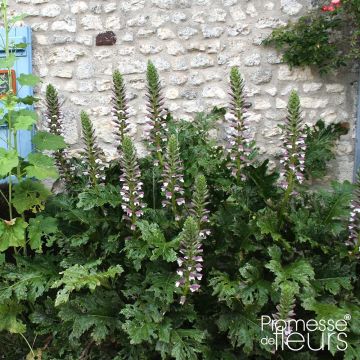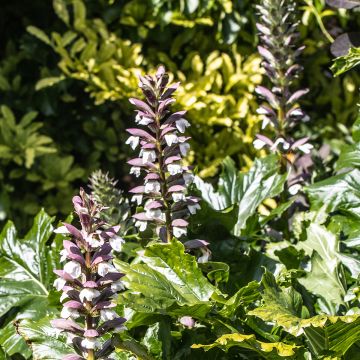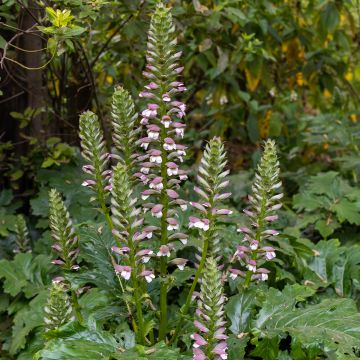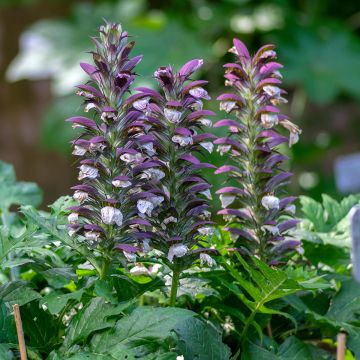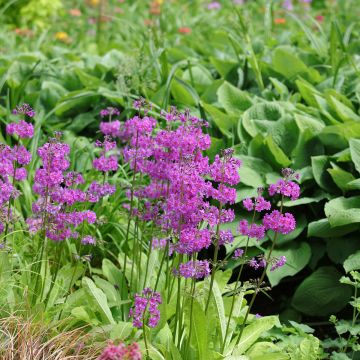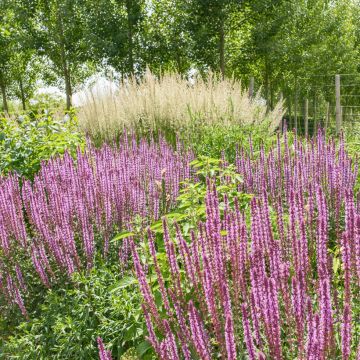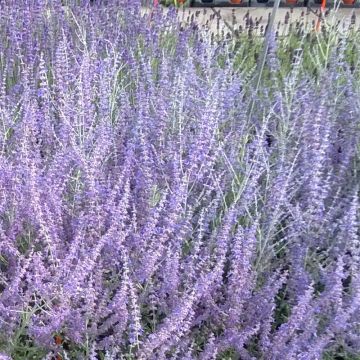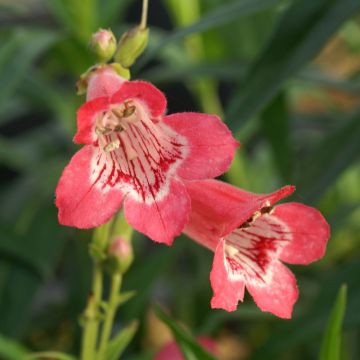

Acanthus hirsutus subsp. syriacus


Acanthus hirsutus subsp. syriacus
Acanthus hirsutus subsp. syriacus
Acanthus hirsutus subsp. syriacus
Bear's Breech
Special offer!
Receive a €20 voucher for any order over €90 (excluding delivery costs, credit notes, and plastic-free options)!
1- Add your favorite plants to your cart.
2- Once you have reached €90, confirm your order (you can even choose the delivery date!).
3- As soon as your order is shipped, you will receive an email containing your voucher code, valid for 3 months (90 days).
Your voucher is unique and can only be used once, for any order with a minimum value of €20, excluding delivery costs.
Can be combined with other current offers, non-divisible and non-refundable.
Home or relay delivery (depending on size and destination)
Schedule delivery date,
and select date in basket
This plant carries a 12 months recovery warranty
More information
We guarantee the quality of our plants for a full growing cycle, and will replace at our expense any plant that fails to recover under normal climatic and planting conditions.
Would this plant suit my garden?
Set up your Plantfit profile →
Description
The Acanthus hirsutus subsp. syriacus, also known as Syrian Bear's Breech, is a perennial plant appreciated for its foliage and graphic floral spikes. Originating from the Middle East, this rather compact species is drought-resistant and hardy down to -15°C at its lowest. It thrives in Mediterranean gardens or in places where water is scarce. It is an architectural plant, both for its large spiny leaves and its two-tone flower spikes. Best planted in full sun in well-drained soil.
The Syrian Bear's Breech belongs to the Acanthus family, like all acanthus plants. Native to the Middle East, specifically Syria, Lebanon, Jordan, and certain parts of Turkey and Israel, this species naturally thrives in regions with a dry, sunny climate, featuring hot summers and mild to moderately cold winters. It is a deciduous herbaceous perennial, forming dense, spreading clumps from spring onwards, reaching a height of 50 cm when flowering with a width of 60 cm.
Its dark green foliage consists of large lanceolate, pinnate, spiny leaves with a slightly velvety texture. The leaves are arranged in a rosette from the base and quickly stiffen over time. Flowering begins in late spring and extends into summer. The flowers, arranged in spikes, range from greenish-white to pale yellow, with a prominent violet calyx, topped with reddish-brown bracts. These floral spikes can reach up to 50 cm in height, emerging above the low, dense foliage. The deciduous vegetation dries out by late autumn.
The Acanthus hirsutus subsp. syriacus is ideal for border plantings, where its structured foliage and floral spikes stand out. In Mediterranean or dry gardens, it creates an interesting contrast with softer-textured plants. It can be paired with perennials like yarrows, whose flat, colourful inflorescences complement the upright spikes of the acanthus. Hardy Geraniums for rock gardens with pink or violet flowers harmonise with the greenish and yellow tones of the acanthus flowers. Catmints, such as the variety 'Kit Kat' with its small blue flowers and aromatic foliage, are another excellent companion for acanthus plants. These pairings create a vibrant display playing with shapes and textures.
Report an error about the product description
Flowering
Foliage
Plant habit
Botanical data
Acanthus
hirsutus subsp. syriacus
Acanthaceae
Bear's Breech
Acanthus syriacus
Middle East
Other Acanthus
View all →Planting and care
The Acanthus syriacus is hardy down to -15°C approximately (in peak). In regions with cold winters, it is advisable to protect it under a thick mulch that will be removed at the end of winter. This plant requires well-drained soil. However, it appreciates the soil to be fresh during the growth and flowering period. This species thrives in sunny exposures, sheltered from the wind, but can tolerate partial shade, where it will grow taller but be less floriferous. Be careful, like all Acanthus, it does not like to be moved. If you want to prevent it from spreading, cut the flower stalk at the end of fruiting or remove the fruits: beware of prickles, it is better to wear gloves! Like all other Acanthus plants, it is susceptible to powdery mildew in humid climates.
Planting period
Intended location
Care
This item has not been reviewed yet - be the first to leave a review about it.
Similar products
Haven't found what you were looking for?
Hardiness is the lowest winter temperature a plant can endure without suffering serious damage or even dying. However, hardiness is affected by location (a sheltered area, such as a patio), protection (winter cover) and soil type (hardiness is improved by well-drained soil).

Photo Sharing Terms & Conditions
In order to encourage gardeners to interact and share their experiences, Promesse de fleurs offers various media enabling content to be uploaded onto its Site - in particular via the ‘Photo sharing’ module.
The User agrees to refrain from:
- Posting any content that is illegal, prejudicial, insulting, racist, inciteful to hatred, revisionist, contrary to public decency, that infringes on privacy or on the privacy rights of third parties, in particular the publicity rights of persons and goods, intellectual property rights, or the right to privacy.
- Submitting content on behalf of a third party;
- Impersonate the identity of a third party and/or publish any personal information about a third party;
In general, the User undertakes to refrain from any unethical behaviour.
All Content (in particular text, comments, files, images, photos, videos, creative works, etc.), which may be subject to property or intellectual property rights, image or other private rights, shall remain the property of the User, subject to the limited rights granted by the terms of the licence granted by Promesse de fleurs as stated below. Users are at liberty to publish or not to publish such Content on the Site, notably via the ‘Photo Sharing’ facility, and accept that this Content shall be made public and freely accessible, notably on the Internet.
Users further acknowledge, undertake to have ,and guarantee that they hold all necessary rights and permissions to publish such material on the Site, in particular with regard to the legislation in force pertaining to any privacy, property, intellectual property, image, or contractual rights, or rights of any other nature. By publishing such Content on the Site, Users acknowledge accepting full liability as publishers of the Content within the meaning of the law, and grant Promesse de fleurs, free of charge, an inclusive, worldwide licence for the said Content for the entire duration of its publication, including all reproduction, representation, up/downloading, displaying, performing, transmission, and storage rights.
Users also grant permission for their name to be linked to the Content and accept that this link may not always be made available.
By engaging in posting material, Users consent to their Content becoming automatically accessible on the Internet, in particular on other sites and/or blogs and/or web pages of the Promesse de fleurs site, including in particular social pages and the Promesse de fleurs catalogue.
Users may secure the removal of entrusted content free of charge by issuing a simple request via our contact form.
The flowering period indicated on our website applies to countries and regions located in USDA zone 8 (France, the United Kingdom, Ireland, the Netherlands, etc.)
It will vary according to where you live:
- In zones 9 to 10 (Italy, Spain, Greece, etc.), flowering will occur about 2 to 4 weeks earlier.
- In zones 6 to 7 (Germany, Poland, Slovenia, and lower mountainous regions), flowering will be delayed by 2 to 3 weeks.
- In zone 5 (Central Europe, Scandinavia), blooming will be delayed by 3 to 5 weeks.
In temperate climates, pruning of spring-flowering shrubs (forsythia, spireas, etc.) should be done just after flowering.
Pruning of summer-flowering shrubs (Indian Lilac, Perovskia, etc.) can be done in winter or spring.
In cold regions as well as with frost-sensitive plants, avoid pruning too early when severe frosts may still occur.
The planting period indicated on our website applies to countries and regions located in USDA zone 8 (France, United Kingdom, Ireland, Netherlands).
It will vary according to where you live:
- In Mediterranean zones (Marseille, Madrid, Milan, etc.), autumn and winter are the best planting periods.
- In continental zones (Strasbourg, Munich, Vienna, etc.), delay planting by 2 to 3 weeks in spring and bring it forward by 2 to 4 weeks in autumn.
- In mountainous regions (the Alps, Pyrenees, Carpathians, etc.), it is best to plant in late spring (May-June) or late summer (August-September).
The harvesting period indicated on our website applies to countries and regions in USDA zone 8 (France, England, Ireland, the Netherlands).
In colder areas (Scandinavia, Poland, Austria...) fruit and vegetable harvests are likely to be delayed by 3-4 weeks.
In warmer areas (Italy, Spain, Greece, etc.), harvesting will probably take place earlier, depending on weather conditions.
The sowing periods indicated on our website apply to countries and regions within USDA Zone 8 (France, UK, Ireland, Netherlands).
In colder areas (Scandinavia, Poland, Austria...), delay any outdoor sowing by 3-4 weeks, or sow under glass.
In warmer climes (Italy, Spain, Greece, etc.), bring outdoor sowing forward by a few weeks.

































